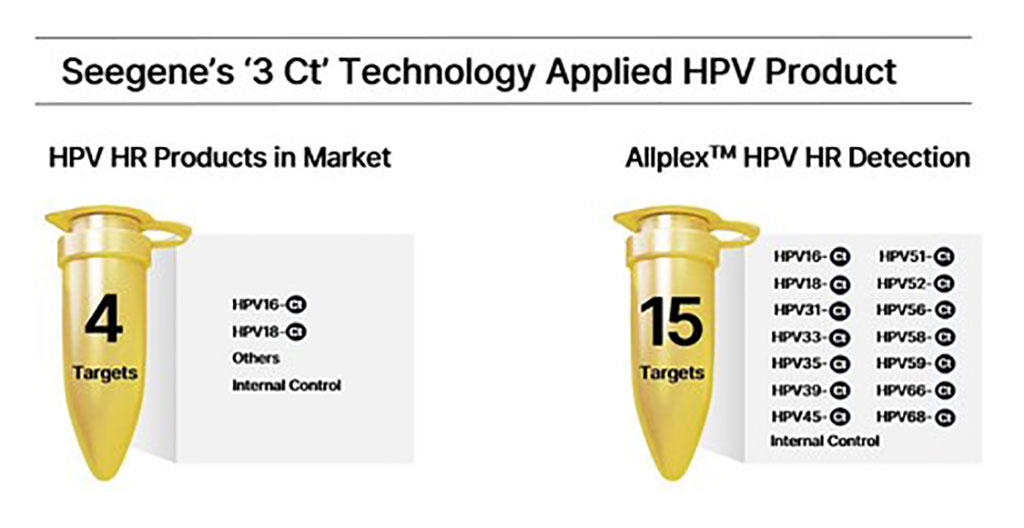Seegene Unveils World's First Commercialized '3 Ct' PCR Assay
Posted on 28 Apr 2022
In a polymerase chain reaction (PCR), the cycle threshold (Ct) value is used to quantify the concentration of a viral DNA sequence (the target). Due to technological limitations, the conventional real-time PCR technique finds the Ct value of one target in one channel. Now, Seegene, Inc. (Seoul, Korea) has developed the world's first commercialized PCR assay applying '3 Ct' technology which can provide the Ct value of three targets in one channel without compromising sensitivity and specificity.
Seegene's '3 Ct' technology combines 19 different patented technologies, including DPO, TOCE, and MuDT. Using five channels in a single tube, Seegene can provide quantitative data for a total of 15 targets. '3 Ct' has been dubbed as the "dream MDx technology." Seegene expects '3 Ct' technology to take syndromic testing to another level. By detecting the causative pathogen, level of infection, and potential of co-infection, it will help determine the priority of treatment and enhance patient management. '3 Ct' technology also increases testing capacity. Such features are expected to improve the service and cost-structure of the medical sector once '3 Ct' technology is widely utilized.

Seegene's first '3 Ct' technology applied product, Allplex HPV HR Detection, is designed to detect 14 high-risk human papillomavirus (HPV) types that can cause cervical cancer. It also provides the individual Ct value of each of the types allowing quantitative analysis regarding infection level. Early detection of HPV contributes to the prevention and management of cervical cancer. HPV products from other industry players provide individual Ct values for two high-risk types, HPV 16 and 18. The Allplex HPV HR Detection, planned to be launched within the first half of this year, will come with a significant cost advantage compared to existing HPV products to increase accessibility to PCR testing, which had been difficult previously due to high costs.
The product will also be compatible with Seegene's fully automated AIOS (all-in-one system). The company plans to introduce the industry's first 'fully automated, mass, syndromic testing system,' to lay the foundation for testing anywhere, including large hospitals, C-Labs, and even small and medium-sized clinics, and make PCR testing part of everyday life. Seegene plans to apply '3 Ct' technology to its entire product line-up, including respiratory virus (RV), sexually transmitted infection (STI), gastrointestinal infection (GI), and urinary tract infection (UTI) assays.
"HPV genotyping is essential for a good follow-up of a patient to observe the emergence, persistence or clearance of each genotype," said HPV expert Sebastien Hantz, Professor at the Faculty of Medicine at the University of Limoges in France. "Seegene is a company very involved in the development of molecular diagnostics tests for the detection of different pathogens. For certain clinical situations, like respiratory infections, syndromic testing is very useful."
Related Links:
Seegene, Inc.




 assay.jpg)









